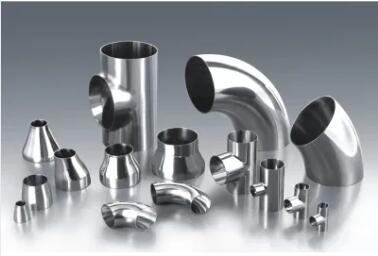What is the role of thread sealants and joint compounds in pipe fittings
2023-11-03
Thread sealants and joint compounds play a critical role in pipe fittings by ensuring leak-free connections and preventing the escape of fluids or gases. These products are applied to the threads of pipe fittings to create a reliable and durable seal. Here's an overview of their roles and uses:
1. Preventing Leaks: Thread sealants and joint compounds are primarily used to prevent leaks at threaded pipe connections, such as those found in threaded fittings, valves, and pipes. The sealant fills gaps and irregularities between the threads, creating a tight seal.
2. Sealing Threads: These products are applied to the threads of pipes and fittings to seal the joint. The sealant material adheres to the threads and prevents liquids or gases from escaping through the gaps.
3. Enhancing Tightness: Thread sealants and joint compounds improve the tightness and reliability of threaded connections, especially in applications with high pressures, vibrations, or temperature fluctuations. They help ensure a leak-free seal over time.
4. Protecting Against Corrosion: Some joint compounds and sealants have corrosion-inhibiting properties. They protect the threads and metal surfaces from corrosion or rust, extending the lifespan of the fittings and pipes.
5. Lubricating Threads: These products often contain lubricating agents that make it easier to thread pipes and fittings together. This reduces the risk of galling, which is when threads become damaged due to friction during assembly.
6. Resisting Chemicals: Depending on the type of sealant or compound, they may resist various chemicals and solvents, making them suitable for specific applications where chemical resistance is essential.
7. Temperature and Pressure Resistance: Many sealants and compounds are designed to withstand a wide range of temperatures and pressures. This makes them suitable for a variety of applications, including those involving steam, high-temperature fluids, or pressurized systems.
8. Ease of Installation: Applying thread sealants and joint compounds is a relatively simple process. They are typically applied to the male threads of a fitting or pipe before assembly.
Common types of thread sealants and joint compounds include:
- Pipe Dope: A thick, paste-like substance that is applied to threads and provides an effective seal against leaks. Pipe dope often contains lubricants and sealants to improve thread engagement and sealing properties.
- Teflon Tape (Thread Seal Tape): A thin, white tape made of PTFE (polytetrafluoroethylene) that is wrapped around the threads. It acts as a lubricant and sealant, creating a watertight and airtight seal.
- Liquid Thread Sealants: Liquid sealants are applied directly to the threads from a bottle or brush. They cure over time, providing a durable seal.
- Thread Locker Compounds: These are used to secure threaded connections and prevent them from loosening due to vibration or temperature changes. They are commonly used in industrial applications.
The choice of thread sealant or joint compound depends on the specific requirements of the piping system, the type of fluid or gas being transported, the material of the pipes and fittings, and the environmental conditions. Properly applied sealants and compounds are essential for ensuring the integrity and reliability of threaded pipe connections in various applications.



